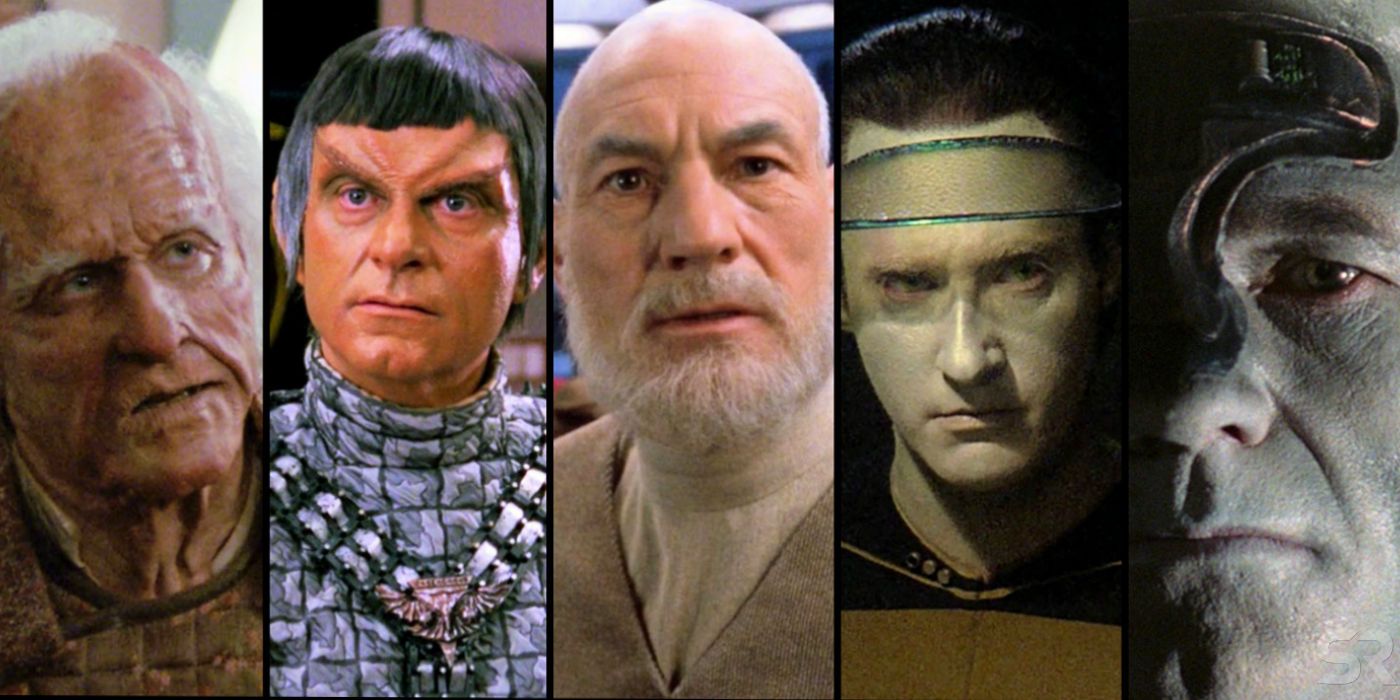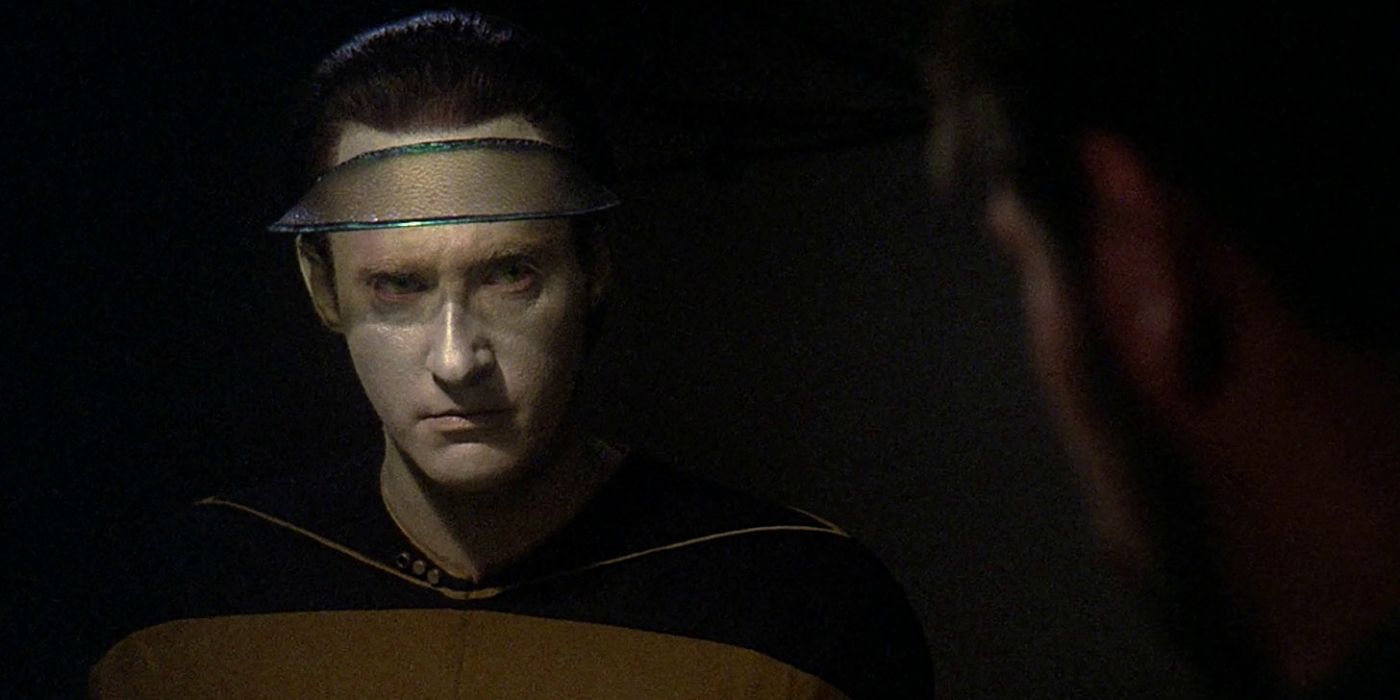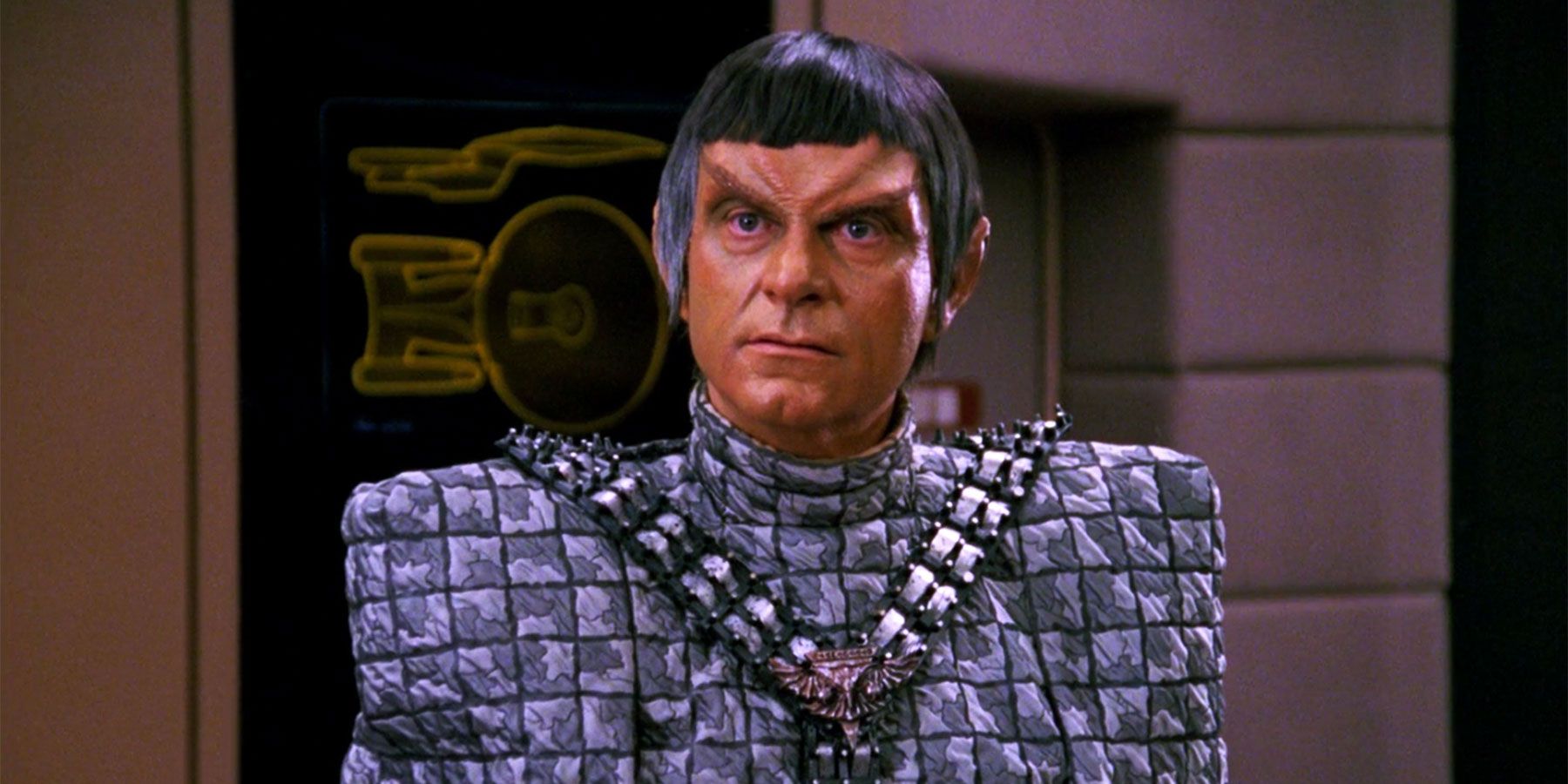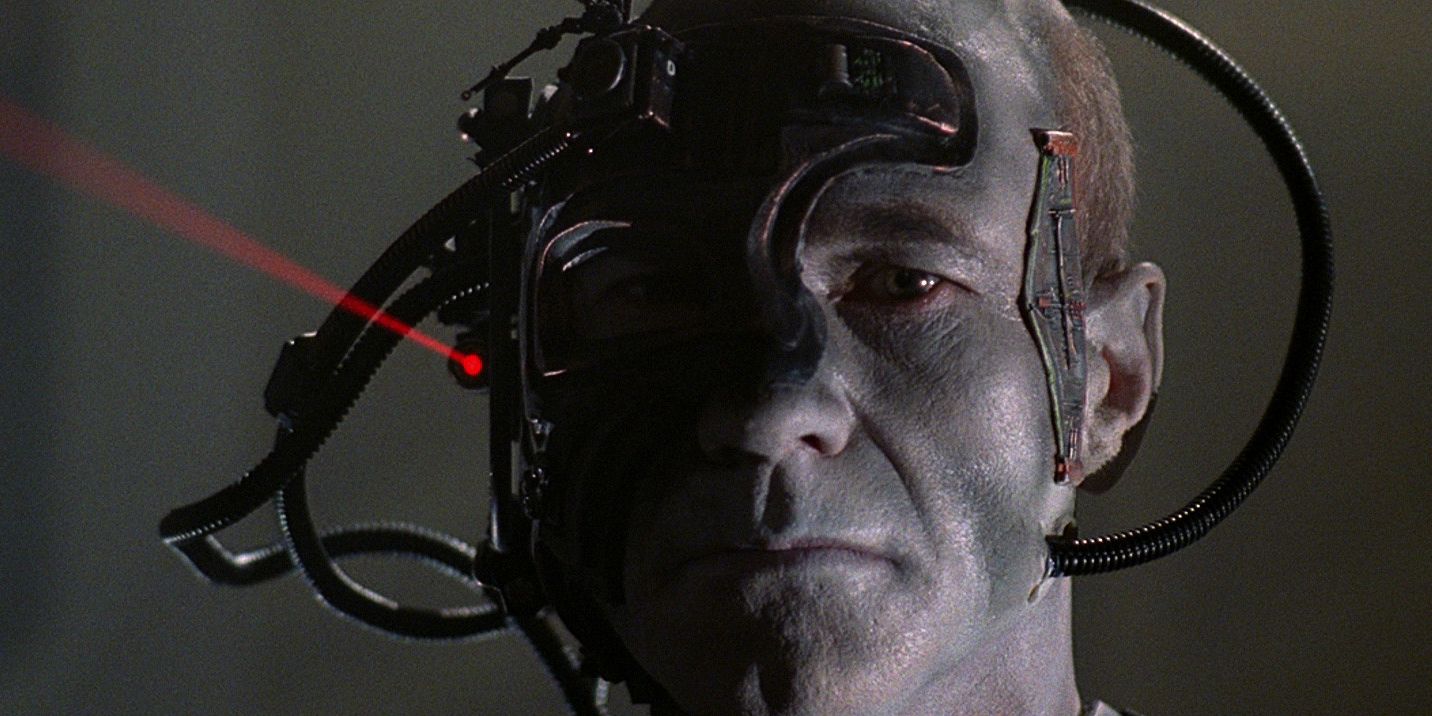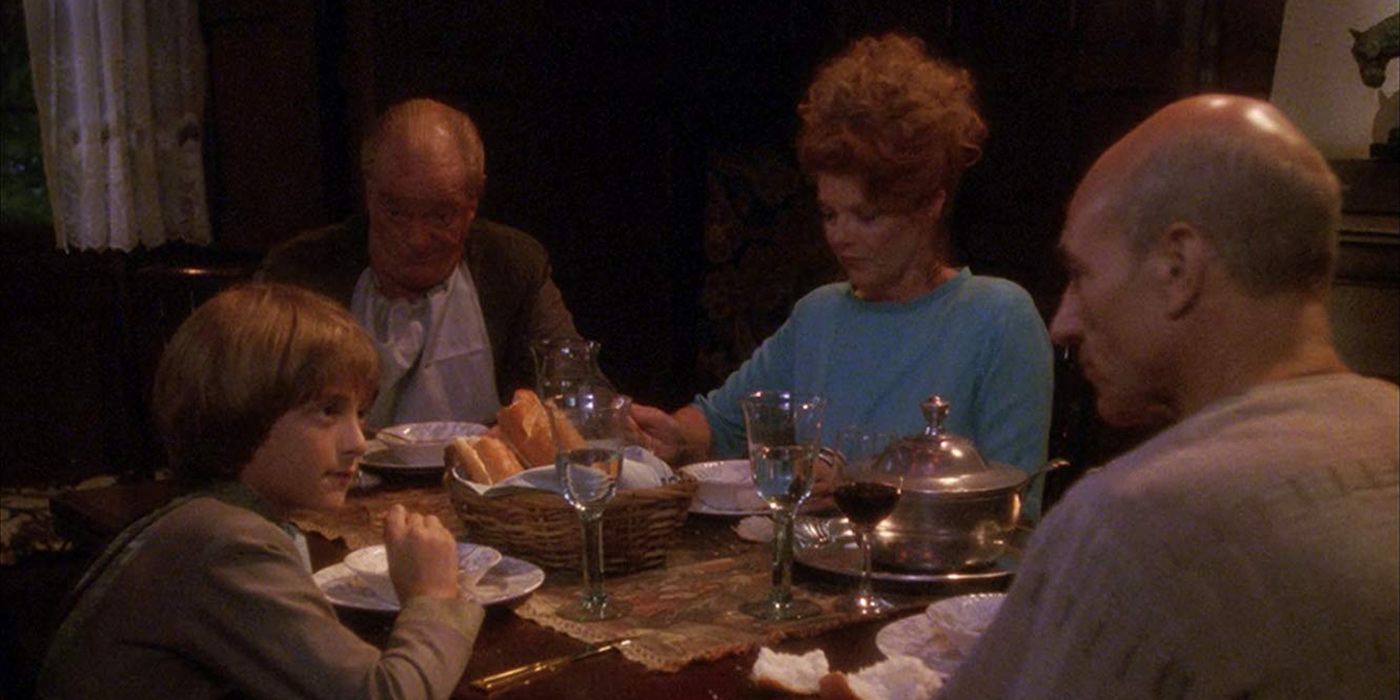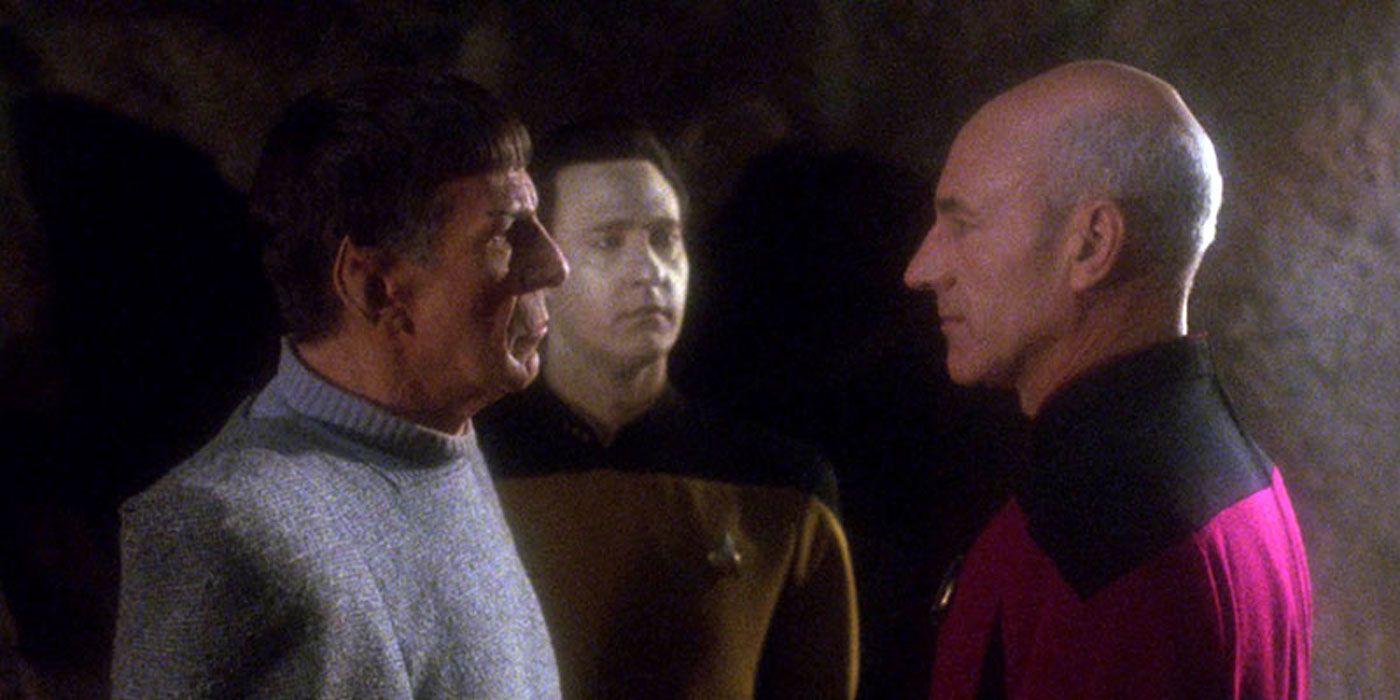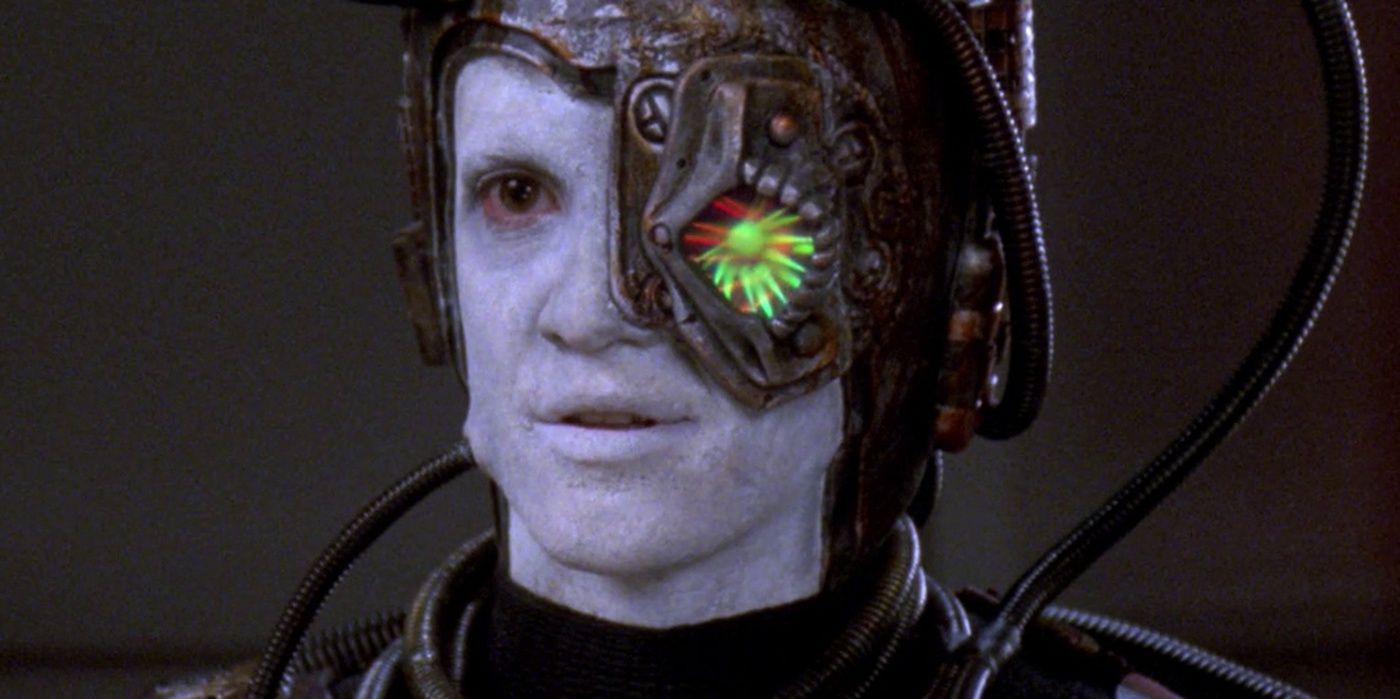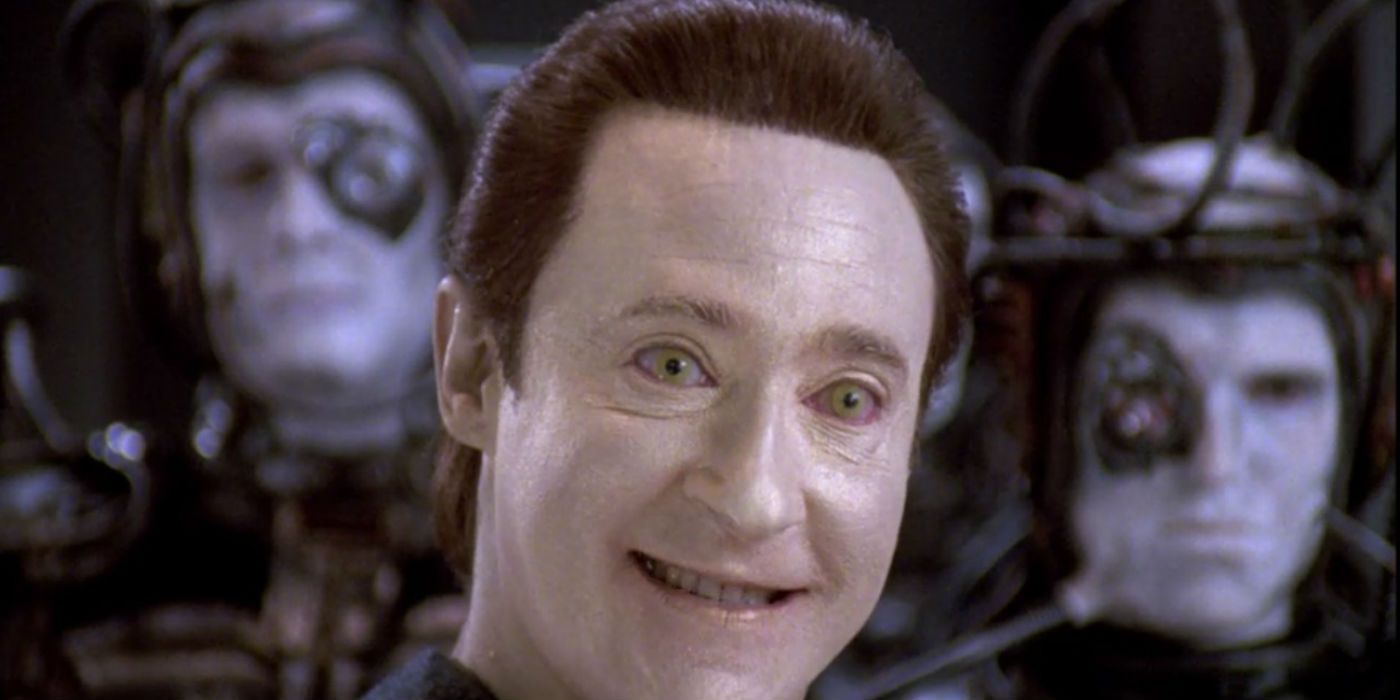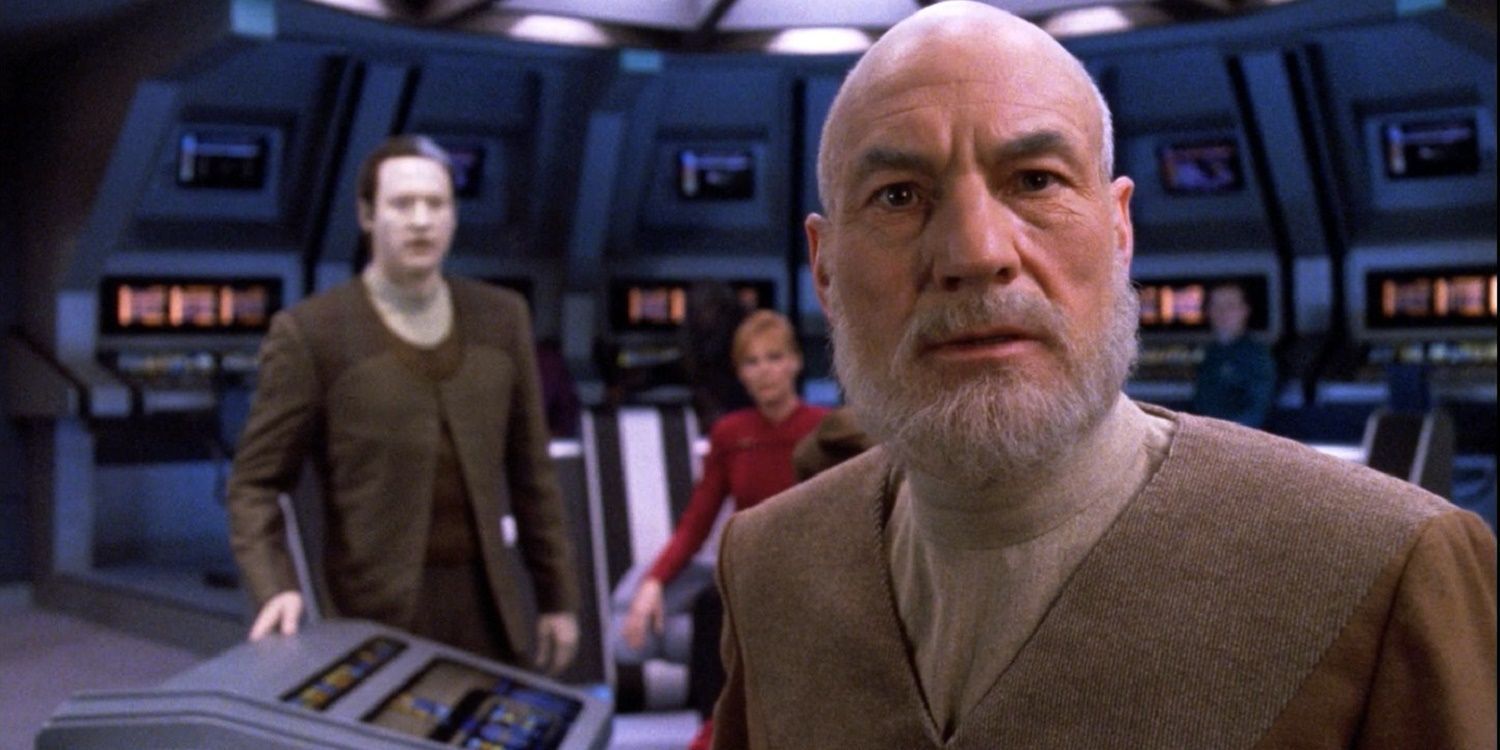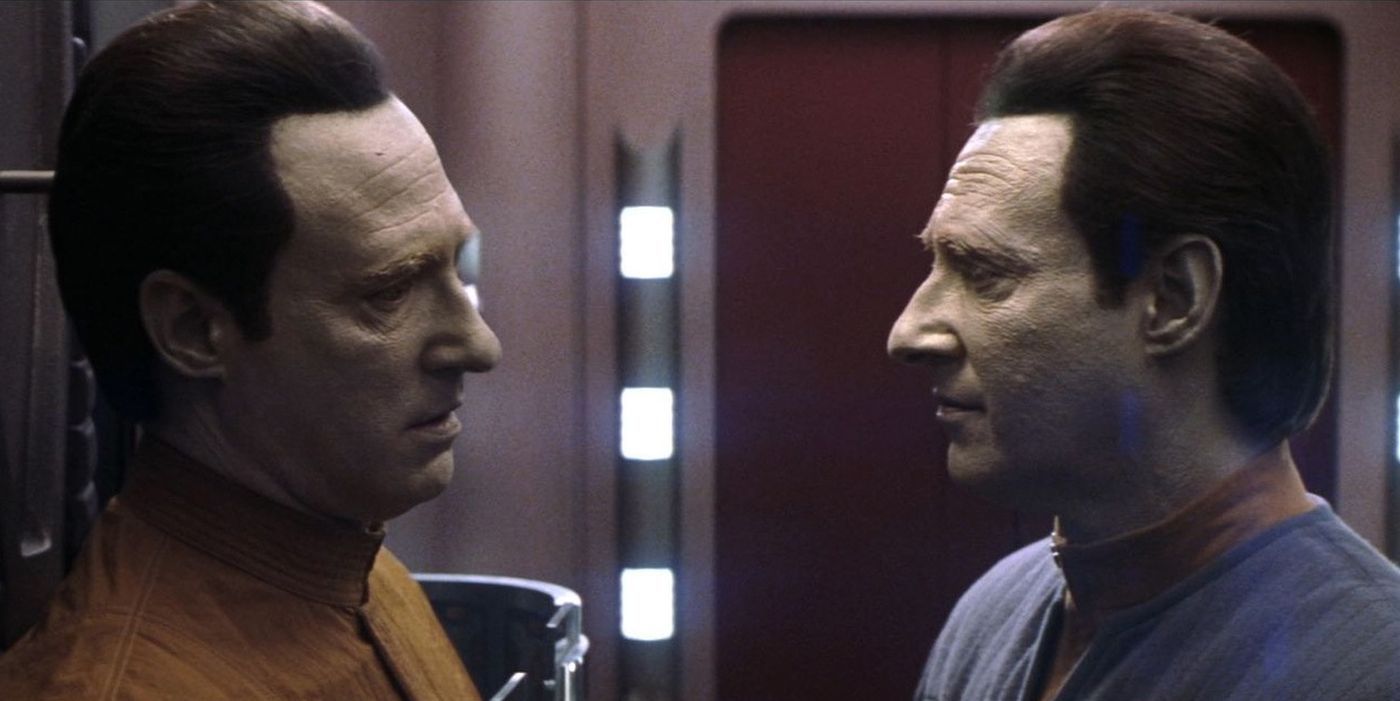The producers of Star Trek: Picard may not want you to think of the show as a sequel to Star Trek: The Next Generation, but a handful of TNG episodes are crucial to understanding where Picard's story begins anew. The dazzling Star Trek: Picard trailer that released at San Diego Comic-Con finally answered some important questions about where Jean-Luc Picard is in his life, where he's going, and how some of his old crew mates might figure into the next chapter of the esteemed former captain's life.
Among the Star Trek: Picard trailer's big surprises was the seeming involvement of the Borg, including Star Trek: Voyager star Seven of Nine, who has no known personal history with Jean-Luc Picard. We also learned during the show's SDCC panel that Hugh, the freed Borg from TNG who served as a sort of dry run for Seven of Nine, will also be returning. Fans had previously been told by producer Alex Kurtzman that the destruction of Romulus would play an important role in the series, and indeed several Romulans appear to be in Picard's orbit now. Perhaps the biggest (and most welcome) surprise was the reveal in the final seconds of the trailer, where Picard is seen playing cards with the long presumed-dead Data, once again played by Brent Spiner.
We may not know where all of these plots and characters will take us, but we can take a look at where they've taken us before. We've assembled a Star Trek: The Next Generation episode guide to help audiences either discover or remember some crucial moments in the life of Jean-Luc Picard and his friends, for both seasoned Star Trek fans and those who are just discovering the wonders of the final frontier.
"The Measure Of A Man"
Widely considered to be TNG's first truly great episode, "The Measure Of A Man" puts Data's rights as a free life form on trial. When Starfleet cyberneticist Commander Bruce Maddox demands Data be handed over to him as a piece of Starfleet property, the specifics of Data's rights are questioned in a way the show had never before explored. After realizing Starfleet was going to side with Maddox, Picard demands a hearing to officially resolve whether or not Data was to be considered a living being with inherent rights and privileges. After a rousing defense from Picard, Data is deemed to be a sentient life form, and declines Maddox's request.
Not only is it a strong episode, but it also says some important things about how artificial life would be treated in Star Trek going forward. The show never again questioned whether or not Data was a living being or just a machine; in many ways, the android's personal journey to discover his own humanity was TNG's greatest unexplored frontier. "The Measure Of A Man" would help solidify the empathetic attitude the show would have for non-organic life, which became a surprisingly recurrent theme over TNG's run, and figures to be a major part of Picard's story as well.
"The Defector"
The Romulans are likely the least compelling of Star Trek's major alien races. More often than not they're portrayed as amoral schemers, a sort of Cold War echo of the Soviet Union; even more often they're used as cannon fodder for a bigger, badder villain, like Shinzon or the Dominion. One of the first exceptions to that rule was season 3's "The Defector." A high-ranking Romulan officer named Jarok defects when he discovers information about plans for a massive war with the Federation. Realizing potentially billions of lives would be at stake, he shared his information with the Enterprise in hopes they could prevent the war.
Jarok is perhaps the first Romulan to feel like a real person; he still believes in the basic tenets of the Romulan Empire, but he cannot stomach the thought of billions - including his young daughter - dying violently in a pointless war. The episode deftly explores his uneasy mix of arrogance and shame, which comes crashing down when it's revealed the information was false, funneled to him by Romulan high command to confirm his disloyalty. Though the Enterprise manages to escape with a little help from the Klingons, Jarok could no longer bear his fate, and took his own life. He left behind a note for his daughter, knowing it could never be delivered until the Federation and Romulans declared peace, which had a profound effect on Picard.
Star Trek: Picard is seemingly interested in Romulans more like Jarok than some of the weaker takes; Picard maintains his vineyard with a pair of Romulan refugees. It's still not clear if the Federation and Romulans made peace - but maybe if there were more men like Jarok in positions of power, the two longtime foes could have finally worked things out.
"The Best Of Both Worlds, Parts 1 and 2"
Ronald D. Moore, one of the franchise's most prolific and beloved writers, has often said the point where Star Trek: The Next Generation finally emerged from Star Trek: The Original Series' shadow was the epic two-parter "The Best Of Both Worlds." While TNG first introduced the Borg at the far reaches of the galaxy in seasons 2's "Q Who", "The Best Of Both Worlds" was the first time the Federation had to face a genuine invasion from the cybernetic zombies. After barely escaping a Borg attack, the Enterprise was left without its captain, as Picard was captured and assimilated into the Borg collective as Locutus. In one of the greatest cliffhangers in television history, the first part ends with Commander Riker ordering Worf to fire on the Borg ship housing their former captain. While he was unable to meaningfully damage the ship, this was the moment where it seemed all hope was lost to recover Picard.
The Enterprise crew would eventually figure out how to disconnect Picard from the collective and stop the Borg's march toward Earth, but it came at a high cost; the Borg decimated a 40-ship Starfleet armada along the way, killing over 11,000 people, including the wife of Star Trek: Deep Space Nine's Benjamin Sisko. Those deaths would haunt Picard for the rest of his life, and strongly contributed to his unusually aggressive, viscerally violent reaction toward them in Star Trek: First Contact. Jean-Luc has always been emotionally vulnerable to the overwhelming nihilism the Borg seem to represent, and Star Trek: Picard looks poised to deconstruct that fraught relationship in some surprising ways.
"Family"
"The Best Of Both Worlds" is usually held up as TNG's two-part masterpiece, but it's actually two-thirds of a trilogy. On its own, "The Best Of Both Worlds" is a gripping, thrilling space epic that shows our heroes taking down a seemingly unstoppable force largely without their captain. But "Family" is not only what makes the overall Borg story better; it's also the moment when TNG finally found its soul, and it never looked back.
Several weeks after his recovery from the Borg attack, Picard takes a sabbatical to Earth, where he stays with his brother, Robert, his wife Marie, and their son Rene, at the Picard family vineyard. We learn Picard hasn't been back home in many years, and that his brother resents him for his success. After receiving an offer to stay on Earth as a the head of an undersea research project, Picard breaks down in front of his brother, sobbing as he explains how, essentially, the Borg raped him.
Picard, of course, returned to the Enterprise, a slightly changed man, but still the captain we knew and loved. However, this would not be the last we heard of the extended Picard family. In Star Trek: Generations, Picard is devastated when he learns that Robert and Rene have died in a fire. Not only was most of his family now dead, but he realized the storied, centuries-old Picard family line would likely end with him. There is an echo of that sadness in the Picard trailer, as Jean-Luc and Number One gingerly tend to the vineyard, seeming very much alone in the world.
"Brothers"
Brent Spiner is not a normal actor. He's of course most well known for his portrayal of Data, but he also convincingly played a self-obsessed, emotionally volcanic villain, Lore, and a doddering simpleton prototype, B4, all with the same face. But perhaps his greatest performance ever was in "Brothers." After Data abruptly commandeers the Enterprise, he steers it toward the mysterious planet Terlina III.. Once he reaches the planet's surface, Data is greeted by Dr. Noonian Soong, his long-believed dead creator. Soong brought Data to him because he'd developed an emotion chip for his most beloved creation and thought it was time he had it. Unfortunately, the homing program that pulled Data to Terlina III also brought Lore to his doorstep. Lore managed to deactivate Data, steal the emotion chip for himself, and kill Dr. Soong, tragically leaving Data unable to express his love for his father as he died in the android's arms.
Every single character in the above paragraph was played by Brent Spiner. For Dr. Soong, Spiner was covered in heavy aging makeup, barely recognizable with a croaky, rasping old man voice. Orphan Black might scoff at such rudimentary production tricks, but having three characters played by the same actor appearing convincingly in the same frame was a minor miracle in 1990. It's also one of Data's defining moments, where he begins to more fully understand his creator's intentions for him, and finds that they closely align with his own ambitions to explore and strengthen his burgeoning humanity.
"Unification, Parts 1 and 2"
"Unification" was the moment Star Trek fans had been waiting five years for. Finally, in the bowels of Romulus' underground caves, Jean-Luc Picard met Spock. After his father's appearance in the appropriately named season three episode "Sarek", it seemed only a matter of time before Picard would encounter the dying ambassador's son. Indeed, while Picard meets Spock on official Federation business, he has the unhappy task of informing Spock that his father has died. Due to incredibly convoluted circumstances, Picard and Sarek had previously shared a powerful mindmeld, a portion of which showed Picard how much Sarek loved his son. Picard offered to share that mindmeld with Spock, who clearly used it as a way to say goodbye to his father.
Beyond the meeting with Spock, Picard's secret mission to Romulus revealed there was a robust underground that strived for the demilitarization of the empire and a reconciliation with the Vulcans, with whom the Romulans share common ancestry. It's unclear if the planet's eventual destruction galvanized or wiped out that resistance, but we do know that there are Romulans living freely in the Federation, as Picard maintains his vineyard with to Romulans. The fallout from the destruction of Romulus figures to be a huge part of Star Trek: Picard's story, and while it would have been nice for the pacifist underground to emerge from such great tragedy, the Romulans' long history of treachery makes that seem like a questionable proposition.
"I, Borg"
Star Trek: The Next Generation showed nearly inhuman restraint when it came to the Borg. Following the cataclysmic events of the season 3 finale/season 4 premiere "The Best Of Both Worlds", the Borg wouldn't be seen again until the tail end of season 5, with "I, Borg". When the Enterprise crew responds to what they believe to be a distress call, they find a crashed Borg scout ship. All but one of the five passengers are found dead on arrival, with the one survivor - "Third of Five" - returned to the Enterprise by Dr. Crusher in an effort to heal him. While Picard and Starfleet Command conspire to use the drone to destroy the Borg once and for all, Dr. Crusher and Geordi LaForge find something curious about the young Borg; the longer he's disconnected from the collective, the more his latent humanity beings to re-emerge. By episode's end, he's taken the name Hugh, refers to himself as an individual, and thinks of Geordi and Beverly as his friends.
For his part, Picard initially refuses to meet with Hugh, lamenting his crew's empathy toward the confused drone. After a fiery meeting in the captain's ready room, Picard realized Hugh is indeed a sentient individual, and he ultimately lets Hugh decide his own fate. Hugh chooses to return to the collective, in hopes that his experiences and sense of individuality might alter the Borg for the better. The episode leaves the results of Hugh's decision an open question, but it wouldn't be long before audiences got their answer.
"Descent, Parts 1 and 2"
Perhaps the most action packed two-parter in the series' run, "Descent" begins with the Enterprise encountering an unusual attack from the Borg. Rather than the lifeless drones bent on assimilation, these Borg were more violent, called each other by name, and vowed to avenge their fallen comrades. During the attack, Data experiences his first emotion - a shock of rage as he strangles one of the Borg to death.
Both the Borg's curious behavior and Data's bouts of anger would eventually be revealed as the scheme of Lore. Data's evil brother found a colony of Borg who had been infected with Hugh's individuality when he rejoined the collective. But unlike Hugh, these Borg's struggle with sentience would be much harder, resulting in severely disabled drones, overwhelmed by emotion and cybernetic malfunctions. Lore helped to repair their injuries, and fashioned himself and Data as Borg messiahs, the ultimate artificial life form; Data's emotions were being fed to him by Lore, who used them like a drug to keep him docile.
Hugh himself would eventually re-emerge to help Picard and friends defeat Lore and neutralize his hold on Data. The end of the episode seemed to hint at a great future for Hugh, as the clear leader of this new, arguably more interesting brand of Borg. However, Hugh was never seen again, and when the Borg returned in future films and series, they were back to their bloodless, assimilating ways. Hugh's return in Star Trek: Picard would seem to confirm we'll finally learn what's become of Hugh and his followers, potentially resolving one of TNG's biggest unsolved stories.
"All Good Things"
The series finale of Star Trek: The Next Generation was not the end for the crew of the Enterprise-D; Picard and friends would go on to make four movies together. But "All Good Things" feels like the true end of that story, much more so than the actual finale, Star Trek: Nemesis. "All Good Things" finds Picard shifting between three different time frames for unknown reasons - the present, 25 years in the future, and 7 years earlier on the day he took command of the Enterprise. Picard would eventually learn this was yet another chapter of the trial from the Q Continuum first seen in the series' very first episode. The multidimensional, godlike Continuum doesn't think humanity is worthy of deep space exploration, and if Picard failed to understand their final gambit, it would result in the destruction of humanity before it ever began. With a little help from Q, Picard cracked the mystery, and learned from is old frenemy that his exploration was just beginning.
While thrilling science fiction on its own terms, "All Good Things" is also a love letter to the show's cast. The allusions to A Christmas Carol are plentiful, as Picard gets a glimpse of a possible future for him and his friends, and he does not like what he sees. All of them have endured some sort of hardship, but Picard himself seems the most tragic, tending to his family vineyard alone as his intellect erodes from a rare neurological disease. At episode's end, he and his crew promise themselves that will never happen, as Picard sits down to the crew poker game for the first time ever and the Enterprise sails off into the unknown.
But we know that sad fate for Picard was at least partially prophetic. He still ends up alone and regretful on his family vineyard, though there's no hint of a neurological disorder. We also know he has drifted away from his Enterprise crew, who he always saw as his closest friends. Without his crew, family, and career, Jean-Luc Picard is essentially living the dark future from the series finale.
Honorable Mention - Star Trek: Nemesis
Star Trek: Nemesis is not quite as bad as it is remembered. The final film featuring the TNG cast was savaged by critics and tanked at the box office when it debuted in 2002. Coupled with the contemporary small screen flop, Star Trek: Enterprise, this was the point where the franchise went into hibernation until J.J. Abrams revived it for the big screen with a new version of the original cast in 2009. Granted, Nemesis is not exactly a classic; it does lean on some silly action movie tropes, and its double clone plot feels like very old hat for 21st century Star Trek. A young, pre-fame Tom Hardy does what he can with villain Shinzon, but the character is too preposterous for even the future Bane to make work.
But the character work in Nemesis is crucial to understanding where the story picks up in Star Trek: Picard. At film's end, Picard had said goodbye to his beloved first officer and counselor, as Will Riker and Deanna Troi got married and Riker became the new captain of the USS Titan. Beverly Crusher, Picard's oldest friend and occasional love interest, was set to depart the Enterprise for Starfleet Medical on Earth. And, of course, Data, Picard's trusted second officer, sacrificed himself to save Picard, blown to pieces along with Shinzon's ship.
There are hints at the end of the movie that B4 - a Soong type android prototype discovered in the film's first act - could possibly serve as a new evolution of Data, but the fact that he's disassembled in a drawer in the trailer suggests the comparatively simple B4 was not up to the task and possibly even broke down over time. Data's death has apparently haunted Picard for two decades, and considering that his new crew boasts a cyberneticist and the Borg will be showing up, it's easy to imagine Data's death will still be a formative issue for Star Trek: Picard.

